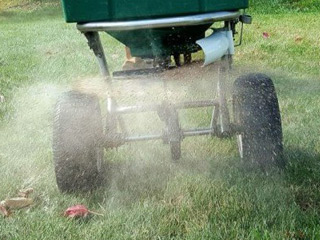Developing An Effective Fertilization Plan
 Creating and maintaining a vibrant, healthy garden requires more than just sunlight and water. Fertilization is crucial in nurturing your plants and ensuring they reach their full potential. An effective fertilization plan can make all the difference, promoting robust growth, blooming flowers, and bountiful harvests. In this comprehensive, the Thrasher Landscaping Inc experts look at the key aspects of developing a successful fertilization plan for your garden.
Creating and maintaining a vibrant, healthy garden requires more than just sunlight and water. Fertilization is crucial in nurturing your plants and ensuring they reach their full potential. An effective fertilization plan can make all the difference, promoting robust growth, blooming flowers, and bountiful harvests. In this comprehensive, the Thrasher Landscaping Inc experts look at the key aspects of developing a successful fertilization plan for your garden.
Understanding the Basics of Fertilization
Before diving into the planning process, it's essential to grasp the fundamentals of fertilization:- Nutrient Requirements - Plants need essential nutrients to thrive. The three primary nutrients are nitrogen (N), phosphorus (P), and potassium (K), often referred to as N-P-K. Additionally, plants require smaller quantities of secondary nutrients (calcium, magnesium, sulfur) and micronutrients (iron, zinc, manganese).
- Soil Testing - Assessing soil nutrient levels is the first step in creating an effective plan. Soil tests reveal deficiencies, helping you tailor your fertilization approach.
- Timing - Knowing when and how often to fertilize is crucial. Different plants have varying nutrient needs throughout their growth cycles.
- Fertilizer Types - Various fertilizers include synthetic (chemical) and organic. Each has advantages and disadvantages; your choice will depend on your gardening philosophy and plant preferences.
Creating Your Fertilization Plan
Now that you have a solid foundation, these are the steps to develop your personalized fertilization plan:- Soil Test - Start with a comprehensive soil test. You can obtain a soil test kit from a local garden center or agricultural extension office. The test results will reveal your soil's pH level and nutrient deficiencies. Interpret the results carefully. Pay attention to N-P-K values and micronutrient levels. This information will guide your fertilizer selection.
- Plant Assessment - Assess the specific nutrient needs of the plants in your garden. Different plants have different requirements, so tailor your plan accordingly. For instance, leafy greens may need more nitrogen, while flowering plants may require extra phosphorus.
- Choose Fertilizer Types - Select the appropriate fertilizers based on your soil test results and plant needs. Options include granular, liquid, slow-release, or organic fertilizers. Organic fertilizers, such as compost or well-rotted manure, are excellent choices for improving soil health over the long term.
- Application Timing - Consider the growth stage of your plants. Typically, you'll fertilize in the spring to kickstart growth and late summer or early fall to prepare for the next season. Avoid over-fertilization, as it can harm your plants and pollute groundwater. Always follow package instructions or consult a gardening expert.
For more information on developing an effective fertilization plan, call the Thrasher Landscape Inc. team at 812-325-4594 or send your queries and service requests through this Online Form.
Areas We Service

